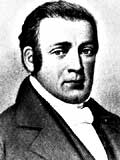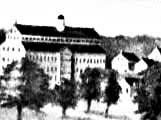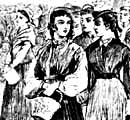Timeline |
||
 |
1821 Boston investors select Pawtucket Falls on the Merrimack River as the site to expand textile production.
|
|
| 1822 Construction and operation of canals, mills, boardinghouses, machine shops & businesses creates an unprecedented demand for Yankee and Irish workers both men and women. |
 |
|
 |
1826 Town of Lowell incorporated with a population 2,300 of which nearly 2,000 are textile workers |
|
| 1834 Lowell textile corporations cut wages resulting in one of the first strikes led by female workers. |
 |
|
 |
1836 City of Lowell incorporated as the 2nd largest City in Massachusetts with a population of 17,633 of which nearly 9,000 are textile workers. |
|
| 1840 Working women begin writing and publishing their own magazines and newspapers like "The Lowell Offering". |
 |
|
 |
1845 Reform leaders like Rev. Theodore Edson propose sweeping changes in labor conditions, temperance, slavery, education, and suffrage. |
|
| 1847 Famine in Ireland force thousands of men, women, and children to emigrate to cities in New England. |
|
|
 |
1850 The Fugitive Slave Law is passed in the Congress requiring escaped slaves to be turned over to federal officers. |
|
| 1853 As a result of strikes and protests, Lowell textile corporation reduce the workday to 11 hours. |
 |
|
 |
1856 Lowell textile companies are producing 115 million yards cotton and wool cloth a year. |
|
| 1861 Sectional tensions over issues of slavery and the union lead to Civil War. |
 |
Learn More...
Copyright ©2003 Tsongas Industrial History Center, 400 Foot of John St., Lowell, MA 01852. E-Contact: Ellen_Anstey@uml.edu.

